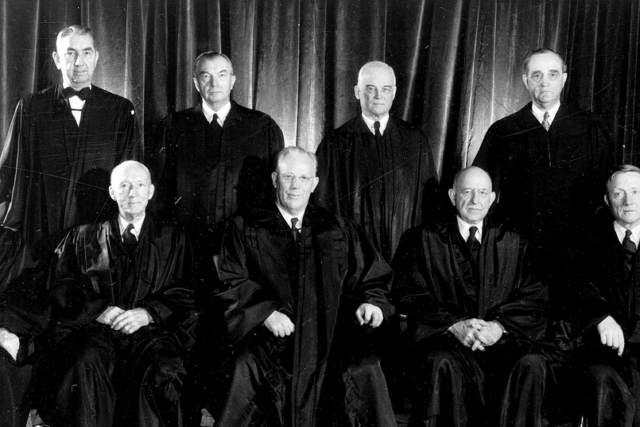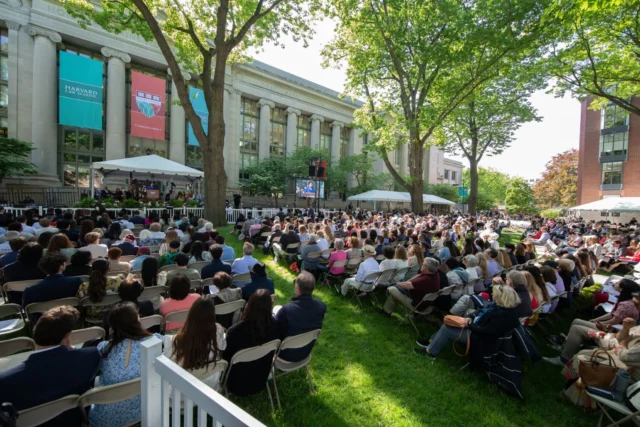After the Supreme Court held affirmative action unconstitutional in June of 2023, President Biden, asked if the Court was a rogue court, declared “This is not a normal court.” He couldn’t have been any further from the truth. For all its radicalism, today’s Supreme Court is, historically speaking, shockingly unremarkable. To the extent that the Roberts Court differs from its predecessors, the differences are a matter of degree rather than kind.
In advancing the interests of the wealthy and privileged—the interests of corporate actors—the Court has done what it has, essentially, always done for the past century and a half—it has interpreted the constitution to pick winners and losers. But it didn’t have to be this way. If the conventional wisdom on the left has been that the Warren Court represents a near-Platonic ideal of what the Supreme Court can and should be, the truth of that wisdom is starting to be challenged.
When Republicans, led by Mitch McConnell, stole a Supreme Court seat in 2016 and then filled the Court during the Trump Administration, it was clear the left had been outplayed when it came to the judiciary. But if that was undeniably true in 2016, it’s less clear that it’s true now. After four years of Donald Trump’s judicial appointees—qualified and otherwise—filling benches across the federal judiciary, then-candidate Joe Biden made the courts a central part of his pitch to voters. The pitch worked. Unlike 2016, Democratic voters were finally motivated by the courts.
In 2021, President Biden, making good on a campaign promise and in the face of calls to pack the Supreme Court, created a Presidential Commission to consider reforms to the Supreme Court. The Commission, though toothless, was a crack in the façade of the Supreme Court. A once untouchable institution was now the subject of serious discussions of reforms. For the first time since Franklin Roosevelt unveiled his court packing plan in 1937, the left was seriously debating the role of courts in American governance. And part of that debate—as unfathomable as it might be to Warren Court evangelists—has been a serious challenge to the idea of judicial supremacy.
As constitutional scholars Daphna Renan and Niko Bowie have argued, the Supreme Court was never supposed to wield as much power as it currently does. As ingrained as judicial supremacy—the idea that courts have the final say over how to interpret the constitution—is in contemporary society, it is nowhere to be found in our constitution. Far from being a prerequisite for democracy to properly function, throughout the history of the United States, judicial supremacy has been wielded to entrench privilege, disempower marginalized groups, and abrogate the powers of the democratically elected branches.
As ingrained as judicial supremacy—the idea that courts have the final say over how to interpret the constitution—is in contemporary society, it is nowhere to be found in our constitution.
In the era of the founding, the idea of judicial supremacy had yet to take hold. The Court, not yet a first among equals in terms of constitutional interpretation, was not the final arbiter of the meaning of the constitution. Perhaps no story illustrates this as well as the founding of the first national bank. Regrettably, though the story itself has found new life in recent years, its significance has been overlooked by many.
During the winter of 1790-91, the recently formed United States was facing a serious constitutional question. In December 1790, Alexander Hamilton, the Secretary of Treasury, had submitted a recommendation to Congress that the United States establish a national bank. James Madison, then in Congress, argued that such an exertion of power would be unconstitutional. Majorities in the House and Senate disagreed, passing the bill, and sending it to President Washington’s desk. But once it got there, Washington himself wasn’t convinced the bill was constitutional.
Secretary of State Thomas Jefferson was certain the federal government had no constitutional authority to establish a national bank and made his case to the President. To resolve the constitutional question, Washington sought Hamilton’s competing opinion. After reading Hamilton’s defense of the bank, Washington was persuaded. The bank was constitutional, and the bill was signed into law. This was the American government working as intended. Each actor—each member of Congress and the President—had all sworn an oath to support the constitution. That meant not only acting within the bounds of the constitution—whatever they might be—but determining the bounds of the constitution as well.
Notably absent from this early constitutional debate was the Supreme Court. In 1791, the Supreme Court had not yet imbued itself with the power to interpret the constitution. Even once the Court gave itself the power “to say what the law is,” in Marbury v. Madison in 1803, the Court did not exercise its self-appointed authority as interpreter of the constitution to strike down a federal law again until 1857—and then it invoked judicial supremacy only to try to protect slavery.
It was only after the Civil War that the Supreme Court started to regularly flex its constitutional interpretation muscles. But as the Court’s power grew, it came at the expense of the other two branches. Beginning in the 1870s, the Supreme Court used its monopoly on constitutional interpretation to shape the United States in its elite-driven image.
Nothing poses a greater threat to judicial supremacy than democracy. Federal courts, after all, have no democratic legitimacy–their power is fragile, and it is made all the more fragile the more democratically legitimate the other branches are. “Where democracy is allowed to flourish,” Niko Bowie has written, “it can undermine social hierarchies that have long seemed like natural features of the landscape.” Unsurprisingly, then, the Court has worked diligently to keep democracy from flourishing.
Federal courts, after all, have no democratic legitimacy–their power is fragile, and it is made all the more fragile the more democratically legitimate the other branches are.
In 1876, the Court limited the federal government’s ability to enforce civil rights litigation and protect the ability of its citizens—namely, its citizens of color—to vote. With democracy effectively checked, the Court in 1903 took another step to ensure its anti-democratic vision lived on, ruling that it was powerless to stop the anti-Black disenfranchisement in the South that it had paved the way for three decades earlier.
Despite the Court’s best efforts, the federal government in 1965 tried, once again, to realize a vision of multi-racial democracy, passing the Voting Rights Act. Threatened by the prospect of democracy, the Court responded—first indirectly by giving monied interests greater influence in electoral politics, and then directly, issuing decisions that drastically limited the likelihood that electoral politics in America represented anything resembling multi-racial democracy.
In 1976, the Court began the process of putting elections up for sale, which it finished in 2010—giving corporations free reign to influence elections. And beginning in the 2000s, the Court began an all-out attack on elections and democracy, issuing decisions that ensured our nominally democratic institutions would be insulated to the greatest extent possible from public input. It began, in 2008, by holding that de facto poll taxes did not violate the constitution. In 2013, the Court upped the ante, killing Section 4 of the Voting Rights Act and declaring a (premature, it turned out) victory against racism. Six years later, in 2019, the Court—addressing the democratic dysfunction that it had worked to engender and taking a page out of its own playbook—ruled that partisan gerrymanders could not be addressed by courts.
With each anti-democratic decision over the past century and a half, the Court has grabbed increasingly more power from the elected branches—effectively ensuring that the political process represents only privileged, monied, powerful interests. And with its power, the Court has, by and large, gone out of its way to entrench racial and economic divisions. In 1883, in what remains good law, the Court interpreted the 13th and 14th Amendments to bar Congress from outlawing racial discrimination by private individuals. During the late 19th and early 20th centuries, the Court stopped Congress from passing an income tax or banning child labor, and it stopped states from regulating working conditions. More recently, the Court has stopped Congress from effectively requiring states to expand Medicaid to cover more low-income individuals and stopped the President from wiping out student loan debt.
The story of the Supreme Court, then, is a story of anti-democracy—of elite interests generally protecting elite interests. And while the Warren Court’s legacy stands in stark contrast to the general history of the Supreme Court—a rare period in which rights for the many and the disadvantaged were protected and expanded—the Warren Court suffered from the same democratic illegitimacy of the Roberts, Rehnquist, and Lochner-era Courts. That the Warren Court’s decisions were aligned with progressive priorities does not fix that fundamental flaw.







